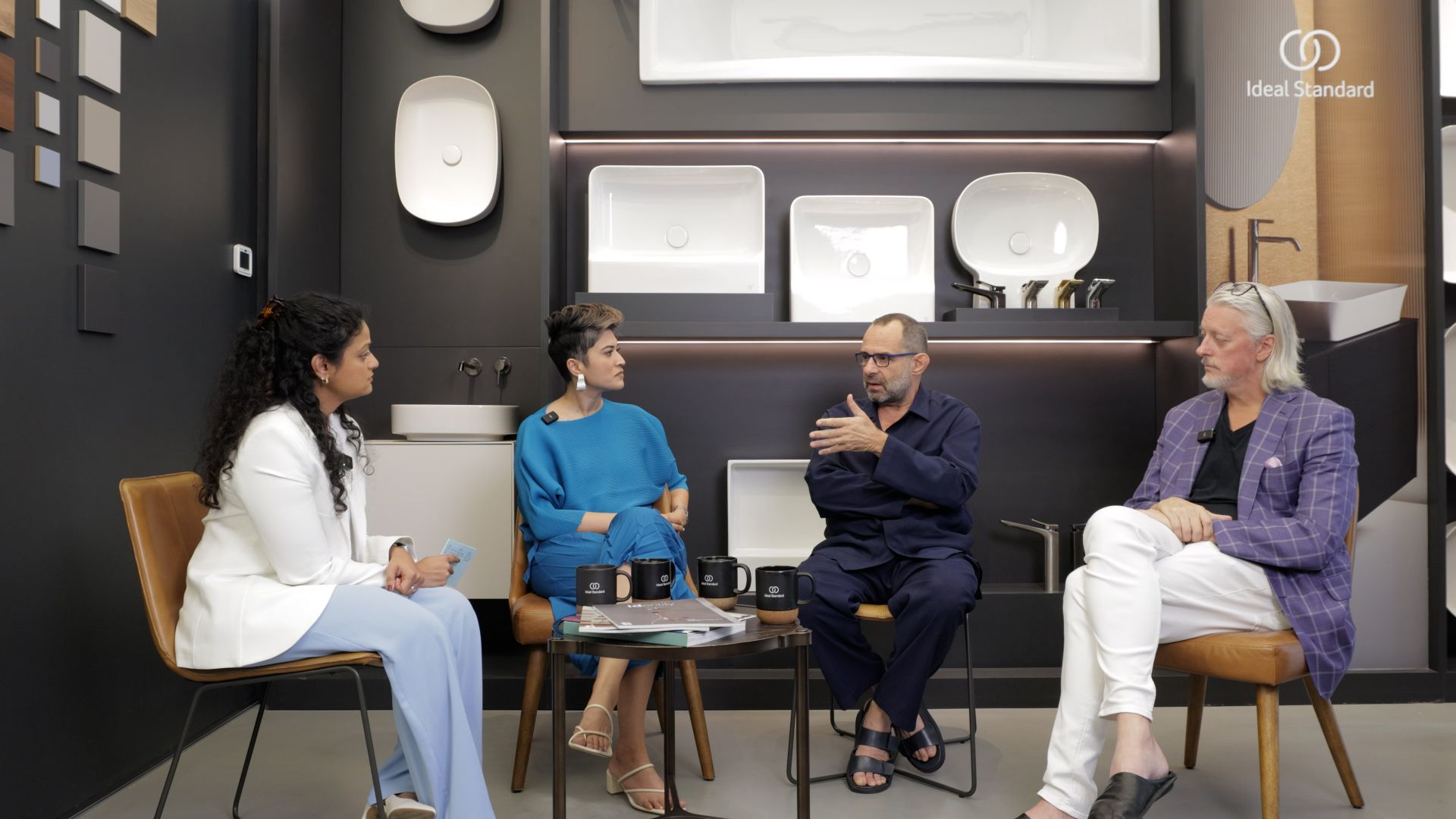Copyright © 2025 Motivate Media Group. All rights reserved.
Paving the way
identity hosted a panel in collaboration with Ideal Standard during Dubai Design Week about pushing the boundaries of design evolution

As the design industry shifts towards sustainable and performance-driven solutions, designers face a critical challenge: how to push the boundaries of innovation while honouring functionality and environmental responsibility. At the heart of this evolution lies the conversation around sustainability, innovation, storytelling and the deeply human aspects of creativity: emotion, inspiration and connection.
During Dubai Design Week, identity collaborated with Ideal Standard to host an engaging panel discussion at the Ideal Standard Design and Specification Center in City Walk, Dubai. The panellists included Roberto Palomba, Chief Design Officer at Ideal Standard and Founder of Palomba Serafini Associati; Pallavi Dean, Founder and Creative Director of ROAR; and Justin Wells, Founder of Wells International, who shared their insights on how the design industry can navigate and rise to various challenges that the future presents.
View the video below
The panel touched upon the reality of sustainability. Palomba reflected on the responsibility his generation bears for environmental degradation. “My generation pushed boundaries that led to the destruction of nature, from plastic waste to air pollution,” he shared candidly. Palomba underscored that sustainability is no longer a trend or a choice – it is a necessity and should be part of the law. “If we want to breathe in the future, we must act now,” he added. Palomba also highlighted the key principles guiding his sustainability-driven approach, highlighting considerations such as durability, disassembly and recyclability.
Dean emphasised that true sustainability must start at the grassroots level, from material sourcing to manufacturing processes. “It’s not about installing a sensor tap and calling it a day. It’s about considering every step of the product’s lifecycle, from the raw materials used to minimising wastage in production,” she noted. Wells emphasised the importance of aligning innovation with environmental responsibility and with reviewing every part of the design process, from the sourcing of material to logistics. He noted that designers must consider not only the functionality of their creations but also the broader impact on communities and ecosystems. Wells also highlighted that while technology and innovation provide exciting opportunities for evolution in design, they must be approached with caution. The industry’s future depends on creating spaces and products that not only meet user expectations but also contribute positively to the environment.
The panellists also discussed the importance of cultural context and the importance of craftsmanship in contemporary life, and shared their thoughts about how technology and affects their practices and businesses.
The Latest
Textures That Transform
Aura Living’s AW24 collection showcases the elegance of contrast and harmony
Form Meets Function
Laufen prioritises design, functionality and sustainability in its latest collections
Preserving Culture, Inspiring Creativity
Discover the Legacy of a Saudi Art Space: Prince Faisal bin Fahd Arts Hall explores the Hall’s enduring influence on the cultural fabric of Saudi Arabia
Channelling the Dada Spirit
Free-spirited and creative, The Home Hotel in Zurich injects a sense of whimsy into a former paper factory
id Most Wanted- January 2025
Falaj Collection by Aljoud Lootah Design
Things to Covet in January
identity selects warm-toned furniture pieces and objets that align with Pantone’s colour of the year
Shaping the Future of Workspaces by MillerKnoll
Stacy Stewart, Regional Director Middle East & Africa of MillerKnoll discusses the future and evolution of design in workspaces with identity.
Shaping Urban Transformation
Gensler’s Design Forecast Report 2025 identifies the top global design trends that will impact the real estate and built environment this year
Unveiling Attainable Luxury
Kamdar Developments has launched 105 Residences, a new high-end development in Jumeirah Village Circle.
The Muse
Located in the heart of Jumeirah Garden City, formerly known as ‘New Satwa’, The Muse adds to the urban fabric of the area
Cultural Immersion Meets Refined Luxury
The Chedi Hegra opens its doors in AlUla’s UNESCO World Heritage Site
Redefining Coastal Luxury
Sunshine Bay on Al Marjan island combines seaside views, exceptional design, and world-class amenities to create a unique waterfront haven
















